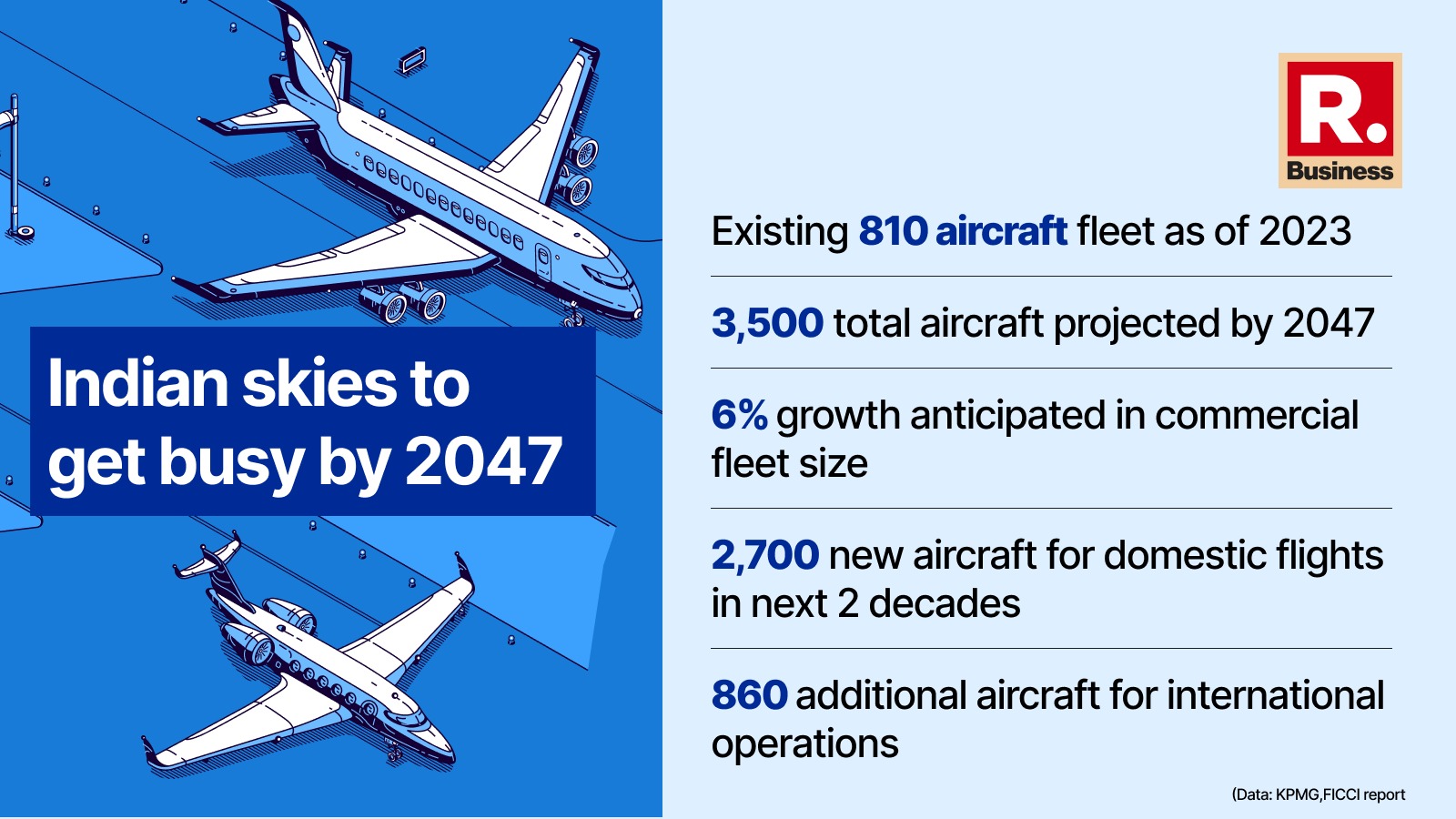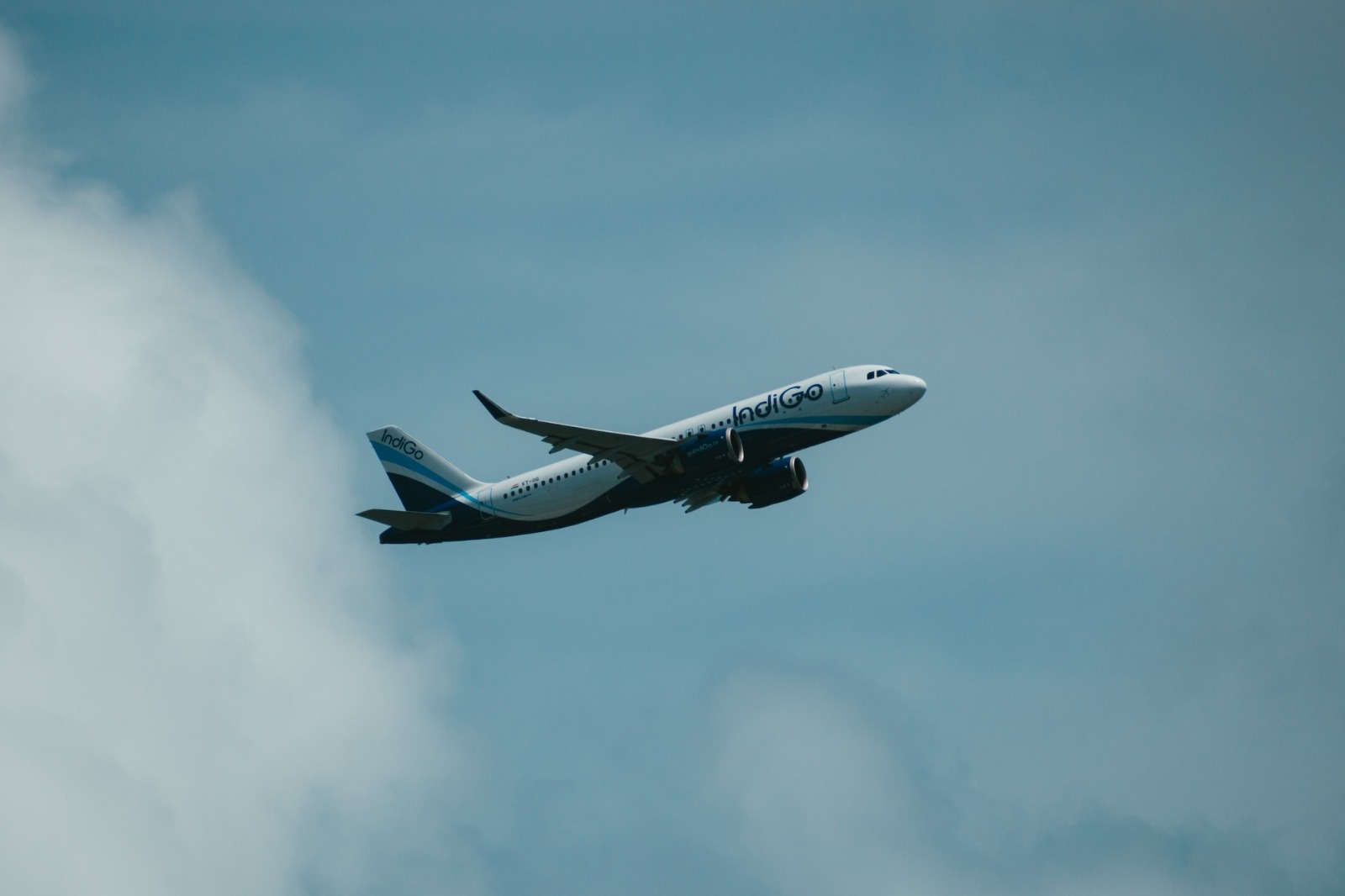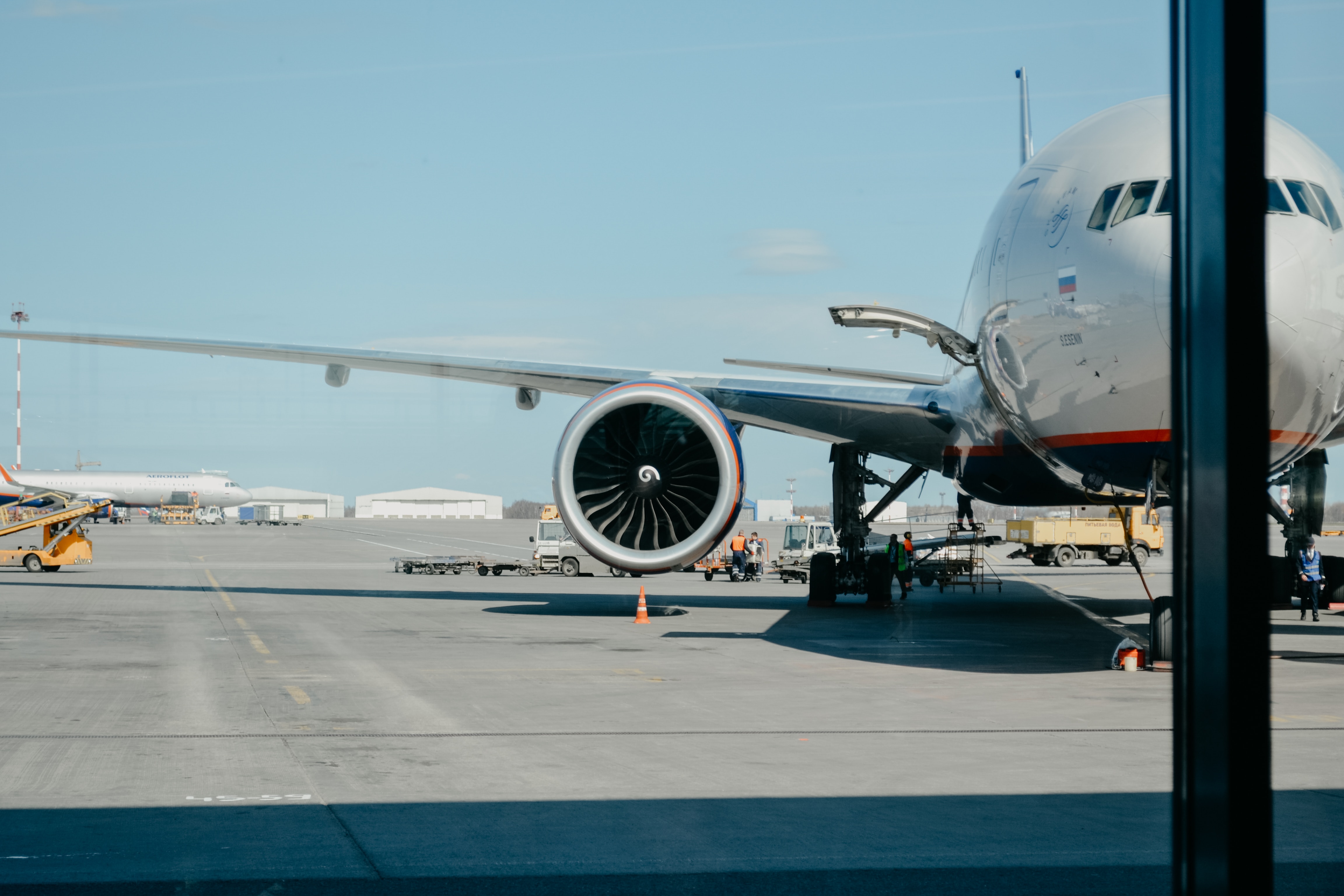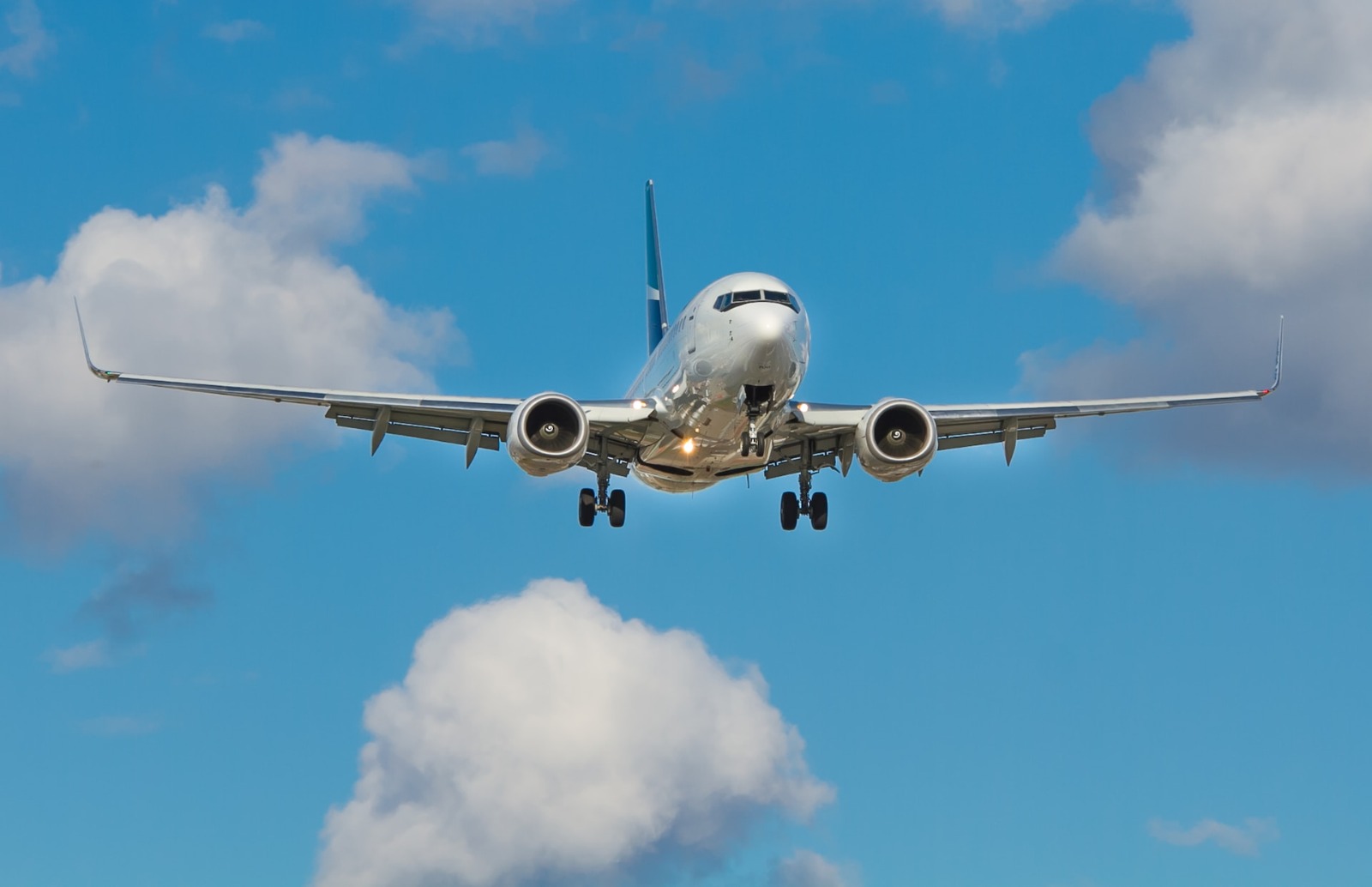
UDAN’s Budget 2024 expectations | Image:Republic
Air travel’s UDAN: Projections charting trajectory of India’s aviation sector, expects addition of 3,500 new aircraft by 2047. Airlines at present have placed confirmed 1,500 aircraft orders, for strengthening the existing fleet of 810 aircraft, says KPMG and FICCI’s recent report. Can the increase of nearly 2,700 aircraft, over a 24-year period, with 6 per cent growth rate help in connecting the country’s smaller centers with their larger peers? Republic Business takes a deep dive.

Regional connectivity scheme UDAN
Of the total 3,500 new aircraft, Indian carriers are expected to induct 2,700 aircraft for their domestic operations, while the remaining 860 aircraft are expected to be pressed for international flights. As per KPMG and FICCI report, this fleet expansion can help boost the government’s National Civil Aviation Policy (NCAP 2016) and the policy framework for the Regional Connectivity Scheme (RCS) or ‘Uday Desh Ka Aam Nagrik’ (UDAN).

Image credit: Unsplash
“The krishi UDAN, international UDAN and the lifeline UDAN have brought inaccessible small far-flung destinations into the country’s mainstream,” says experts. Notably, the schemes which also ensured essential and lifesaving medical supplies to reach remote places, provided succor in difficult times.
“Apart from UDAN democratising aviation and boosting distant and remote economies, the scheme if taken forward full throttle exemplifies national integration,” veteran aviation analyst Dhairyashil Vandekar told Republic Business.
The scheme has contributed in reducing the urban-semi urban and rural divide and by its inclusive nature and overreach, UDAN has silently enhanced the feeling of oneness amongst the people, unifying them, the aviation expert added.
Capacity building needs good infra
In its report issued last month, Centre for Asia Pacific Aviation (CAPA) India had indicated Air India express, which had plateaued at around 20-25 aircrafts for almost 15 years, to have a fleet of more than 100 aircraft in 2024. However, CAPA has underlined that “fleet inductions will be for domestic operations given the need to have a competitive domestic network”.

Image credit: Unsplash
Vandekar says capacity building by airline companies in India is a welcome move. However, Vandekar said among imminent infra development of airports includes making four airports in fog-affected north India CAT-III compliant.
“There is an urgent need to upgrade the radio navigation system at Jammu, Varanasi, Chandigarh, and Srinagar airports to CAT III B ILS. This will ensure uninterrupted civil flight operations during winters and in inclement weather,” Vandekar said.
“Although runway management in some of the hyper-sensitive airports is with the Indian Air Force, Airports Authority of India (AAI) needs to take the initiative for this purpose as the runway is used maximum throughout the day by AAI for operation of civil flights,” the Pune-based expert opined.
Regulation of air fares
Launching long-haul international fights is challenging with long break-even periods and stiff competition from foreign airlines and global hub carriers, says the KPMG and FICCI report. These connections are critical for the development of India as an aviation hub and to meet the aspiration of connecting the world through India.

While the report has stressed on airports, airlines and regulators to collaborate for making operations efficient and conducive for hub operations through well-defined slot banks, reduced minimum connect times and efficient transfer processes, experts feel government must enhance its regulatory mechanism to ensure air fares on more frequented sectors don’t often skyrocket.
“Holidaymakers and tourists book air tickets months in advance. They have nothing to lose. Students travelling to their hometowns and ailing persons travelling for treatment are the worst-hit by high air fares,” said Vandekar.
“It is time that the Civil Aviation ministry puts a mechanism in place to control and regulate the monopoly and practices of the industry stakeholders that jacks up air fares beyond the reach of regular travellers.” The veteran aviation expert says, “Statistics apart, India will become the biggest aviation leader in true sense when air travel is seen as no luxury.”
Travel allowances
While the total air passengers in 2047 are estimated to grow more than six-fold to around 1.3 billion, India has seen the emergence of an increasing number of people upgrading mode of travel, in most cases from train journeys to now catching a flight.

Image credit: Unsplash
Several industry organisations have forecasted estimates of passenger traffic in India over the next two to three decades. The forecasts range from 1.1 billion passenger footfalls to a growth to 1.3 billion footfalls by 2047. The experts have underscored a more affordable air travel and government’s decision to encourage air travel of the country’s armed forces’ personnel.
This initiative in the national interest, coupled with more migrant workers doing air travel is an encouraging sign of inclusive aviation.
“Information technology, automobile and manufacturing hubs, and even the pharma industry have played a pivotal role in contributing to the growth of air travel in India. What is more heartening that jawans of our armed forces have been offered provisions for more affordable air travel,” said Vandekar, adding that inclusivity is the way forward for India’s air travel to see an increase to 1.3 billion annual passengers by 2047, with a projected annual growth of 6.8 per cent.


